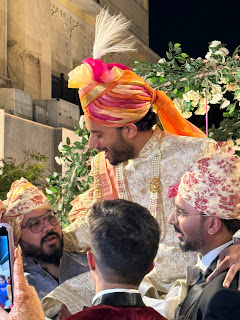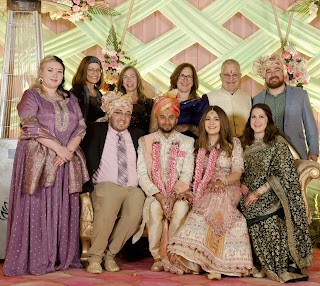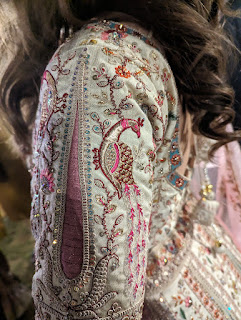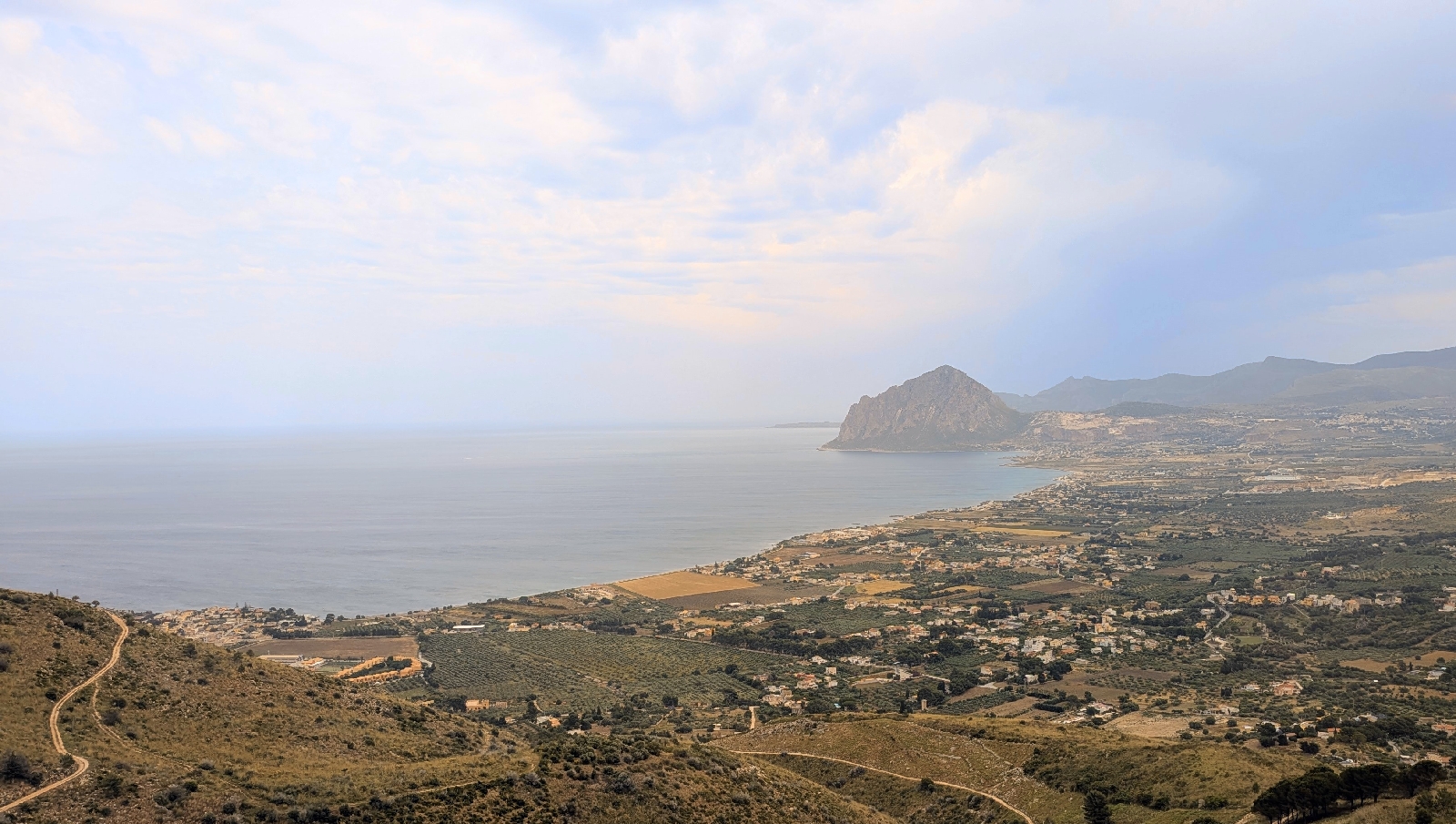Final events of Tuesday of January 16, 2024.
It is 6pm on Tuesday night and there are just a few more events.
First the men having the Safa put on. Next the Baarat - this is the grooms arrival. Then - The arrival of the bride. Last but not least, the wedding reception.
During the Pheras ceremony, you may have noticed the turban on Sarrels head. A safa (turban), is a menswear accessory with deep roots in Indian tradition. It features heavily during the wedding ceremony as most men tend to wear this to denote their pride. After the Pheras, the men were invited to have a safa done for them. You will see many of the men with this done, not just in the next 3 pictures, but throughout the rest of the events. Guests and family members alike participated.
Phil is rocking it!
The Baarat was next. A Baarat is the groom's procession into the wedding ceremony. The groom is normally riding a horse or in some cases an elephant. Sarral was on a horse. The procession signifies an age-old tradition of the groom who would travel an average of five to seven days to his bride to her home. Nowadays, the baarat is condensed to up to an hour of dancing and celebration.
The baarat is welcomed by the bride’s family—a ritual known as milni takes place at the venue’s entrance where the groom’s family and the bride’s family meet. The bride’s mother applies a tilak (ceremonial red dot) on the groom's forehead and performs an aarti to ward off any evil.
The grooms family is gathering in front of the hotel. Drums were playing and people were dancing!

Sarral was at the back of the procession on his horse.
As he got closer to venue entrance, the crowd grew!
And grew! The procession was moving at a snails pace and the drums and dancing kept up!
Z
The rest of the crowd were waiting at the venue entrance! I know I keep saying it, but the dancing and drums made everything so joyous.
Waiters were waiting with appetizers for the hungry crowd.

Here is Kathy and Chris waiting to greet the groom.
At some point, the groom dismounted and his friends carried him in the rest of the way.

As described above, here is Kathy (mother of the bride), waiting to greet the groom. His family helped her with the ritual.


After the greeting and acceptance, the grooms friends carried him off to the stage where he waited for his bride. (Sorry for all the pictures, but I wanted to remember the whole event.)
Now for the bride entrance!
Explanation: The bride enters the ceremony site and is brought to the Mandap by her maternal uncle, or other relatives and bridesmaids. This is known as the Kanya Aagaman which literally translates to “the arrival of the bride.” Emily had 2 friends and her sister and sister - in - law.

While the groom entrance takes over an hour, the bride slowly processed for approximately 5 minutes to the stage.
This is then followed by the jaimala or garland exchange with the bride. A garland is considered to be the symbol of love and respect for each other, thus having a significant role in a marriage ceremony.
After the exchange of the garland, and introduction of the couple, there was a pretty intense sparkler show. While Sarral was hugging Emily, I actually thought he was protecting her from the sparks.

After all the fanfare it was time for……you guessed it…pictures. It seemed like Sarral and Emily sat for a couple hours taking pictures with the different family members while everyone ate the reception dinner.
Here is our family!
You all may have noticed how beautiful each of Emily’s dresses were. This final gown was call a lehenga. A lehenga is a skirt and crop top with a long shame like scarf called a dupatta. It had detailed embroidery all over, and the skirt appeared to be quite heavy with it.
Phew!!!! I think that is it! We all enjoyed a great dinner at the reception, (no dancing or music) and I hope everyone enjoyed our description of the wedding celebrations. I hope I got all the Indian tradition explanations right!

































You did a great job, explaining everything! Just wondering if I could see a picture of just your last dresses, Chris and Mary, or did I miss that picture somewhere? 😆
ReplyDeleteHi Sue! We sort of cheated and wore dresses we already owned, but they were heavily beaded. We didn't plan to match but... oops. We're wearing pashminas we bought on this trip because we knew the evening would be cool. Isn't the embroidery on Emily's lehenga amazing? Jaipur is known for its craftspeople, especially jewelry and fabrics.
Delete